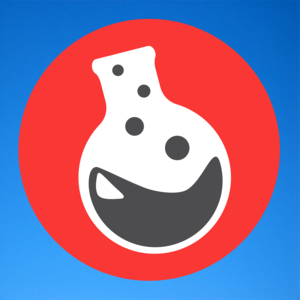12136696
AQA (9-1) Topic 4
Descripción
Sin etiquetas
Test por https:// revisechemistry.uk, actualizado hace más de 1 año
Más
Menos

|
Creado por https:// revisechemistry.uk
hace casi 7 años
|
|
Resumen del Recurso
Pregunta 1
Pregunta
Which oxide is a base?
Respuesta
-
carbon dioxide
-
magnesium oxide
-
sulfur dioxide
-
silicon dioxide
Pregunta 2
Pregunta
Which metal is most reactive?
Respuesta
-
sodium
-
iron
-
zinc
-
magnesium
Pregunta 3
Pregunta
Iron can be extracted from iron oxide using a process called [blank_start]reduction[blank_end]. This involves heating the ore with [blank_start]carbon monoxide[blank_end] to remove the oxygen from the compound. This process is also called a [blank_start]displacement[blank_end] reaction, and gives two products: iron and [blank_start]carbon dioxide[blank_end].
Respuesta
-
reduction
-
oxidation
-
electrolysis
-
carbon monoxide
-
carbon dioxide
-
sulfur dioxide
-
copper
-
displacement
-
combustion
-
hydrolysis
-
carbon dioxide
-
carbon monoxide
-
copper
Pregunta 4
Pregunta
Zinc is reacted with sulfuric acid, and bubbles form. What gas is this?
Respuesta
-
hydrogen
-
oxygen
-
carbon dioxide
Pregunta 5
Pregunta
Sodium hydroxide is added to a flask containing hydrochloric acid and a few drops of universal indicator. A small excess of sodium hydroxide was added. Select the correct colour changes.
Respuesta
-
red → green → purple
-
green → red → purple
-
purple → red → green
-
green → purple → red
Pregunta 6
Pregunta
Pick the most likely pH of hydrochloric acid
Respuesta
-
1
-
6
-
8
-
13
Pregunta 7
Pregunta
Which metal oxide can be reacted with carbon to produce the metal?
Respuesta
-
aluminium oxide
-
sodium oxide
-
copper oxide
-
magnesium oxide
Pregunta 8
Pregunta
A student wants to make a metal salt. He decides he is going to use copper oxide and sulfuric acid as his starting materials, and adds 20 ml of acid to 2 g of the metal oxide. He finds that [blank_start]heating[blank_end] the solution makes the reaction happen faster. Eventually the reaction stops and there is still some copper oxide left, and notes that this must mean the copper oxide was added in [blank_start]excess[blank_end]. He also notes that the solution has now turned blue, and starts to filter off the remaining solid. To get the salt out of solution he needs to [blank_start]evaporate[blank_end] the water off, and sets up his equipment. He decides to only remove a small amount of water, and leave it to crystallise out over night. When he comes back in the morning he finds lovely blue crystals of copper [blank_start]sulfate[blank_end].
Respuesta
-
heating
-
excess
-
evaporate
-
sulfate
Pregunta 9
Pregunta
The [blank_start]reactivity[blank_end] series can be used to see the relative tendency for metal [blank_start]atoms[blank_end] to form [blank_start]cations[blank_end] - the higher up the series, the more likely it will form a [blank_start]positive[blank_end] ion.
Something similar can be said for a metal's resistance to [blank_start]oxidation[blank_end] - the higher up the series, the more easier it is to [blank_start]oxidise[blank_end].
Respuesta
-
reactivity
-
atoms
-
ions
-
cations
-
anions
-
positive
-
negative
-
oxidation
-
reduction
-
oxidise
-
reduce
Pregunta 10
Pregunta
A more reactive metal can displace a less reactive metal from a compound in solution.
Respuesta
- True
- False
Pregunta 11
Pregunta
[blank_start]acid[blank_end] + metal [blank_start]carbonate[blank_end] → salt + water + carbon dioxide
Respuesta
-
acid
-
carbonate
Pregunta 12
Respuesta
-
DC current
-
AC current
-
anode
-
anion
-
electrolyte
-
cation
-
cathode
¿Quieres crear tus propios Tests gratis con GoConqr? Más información.
